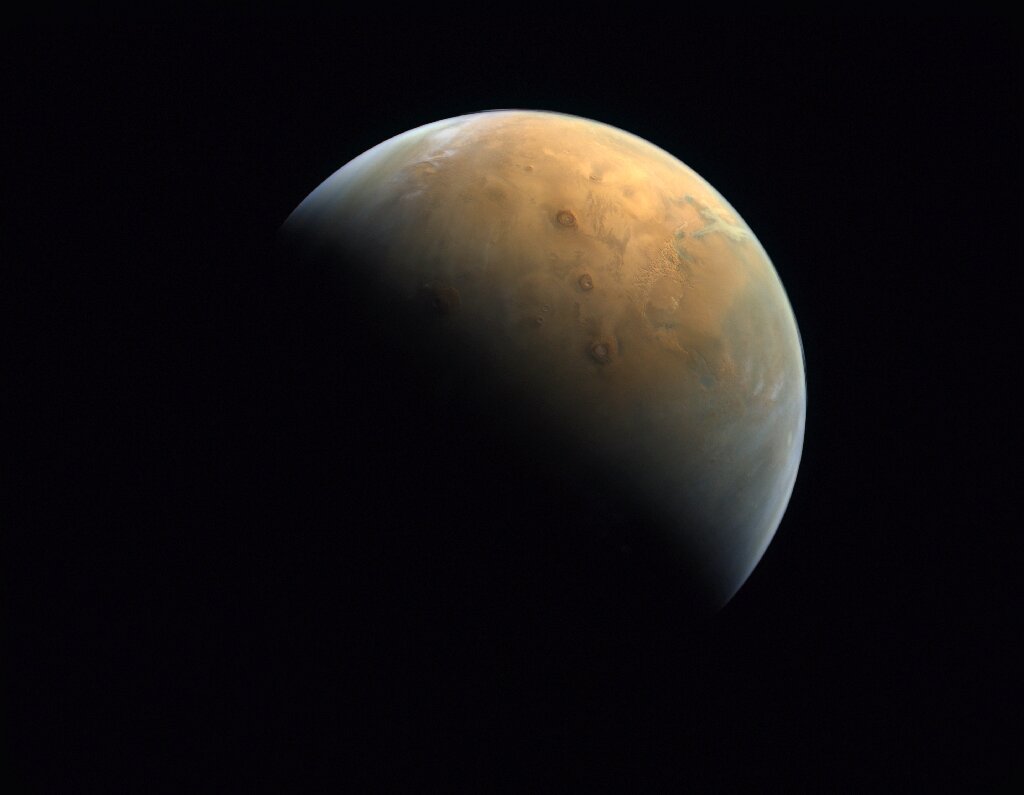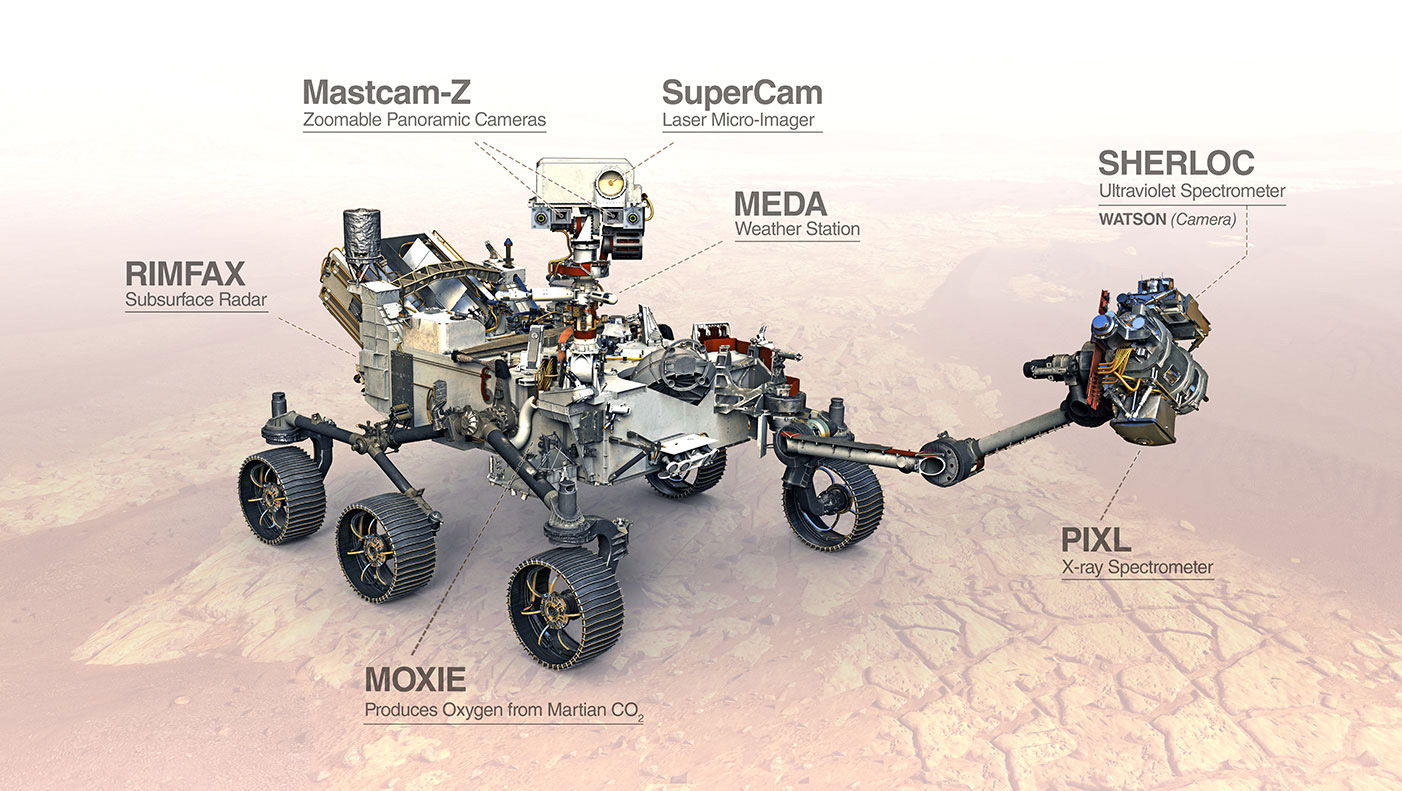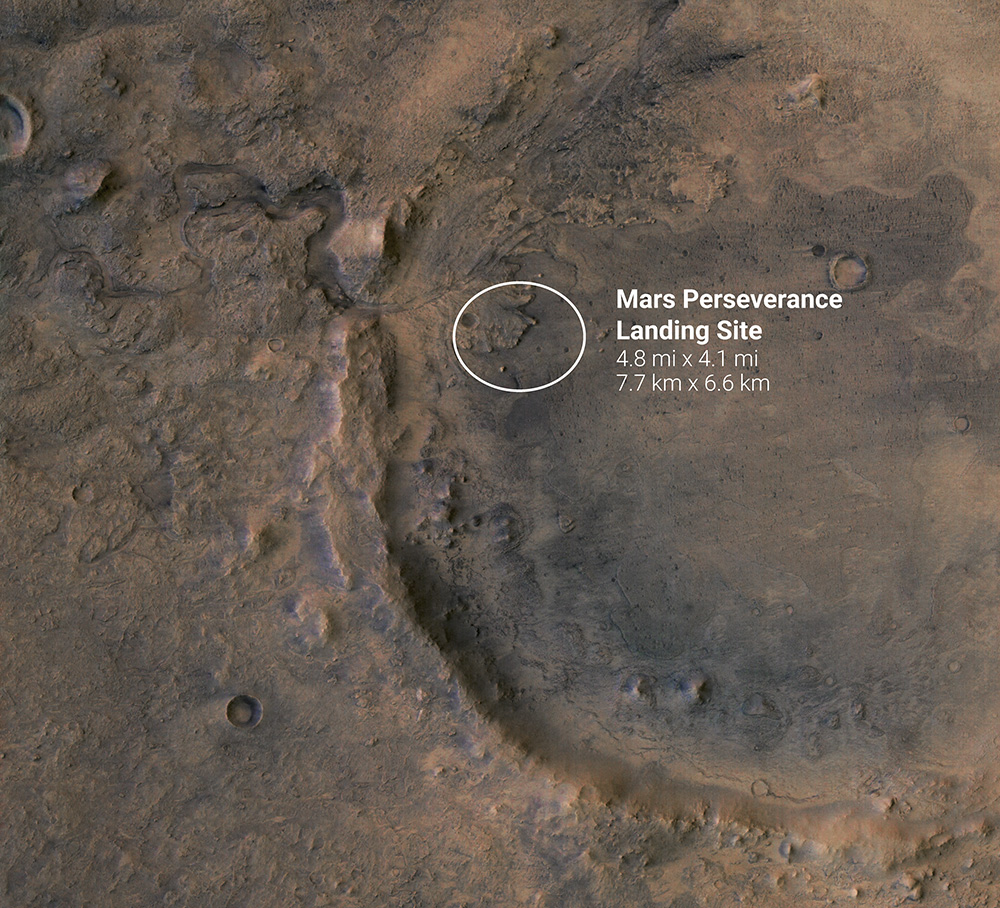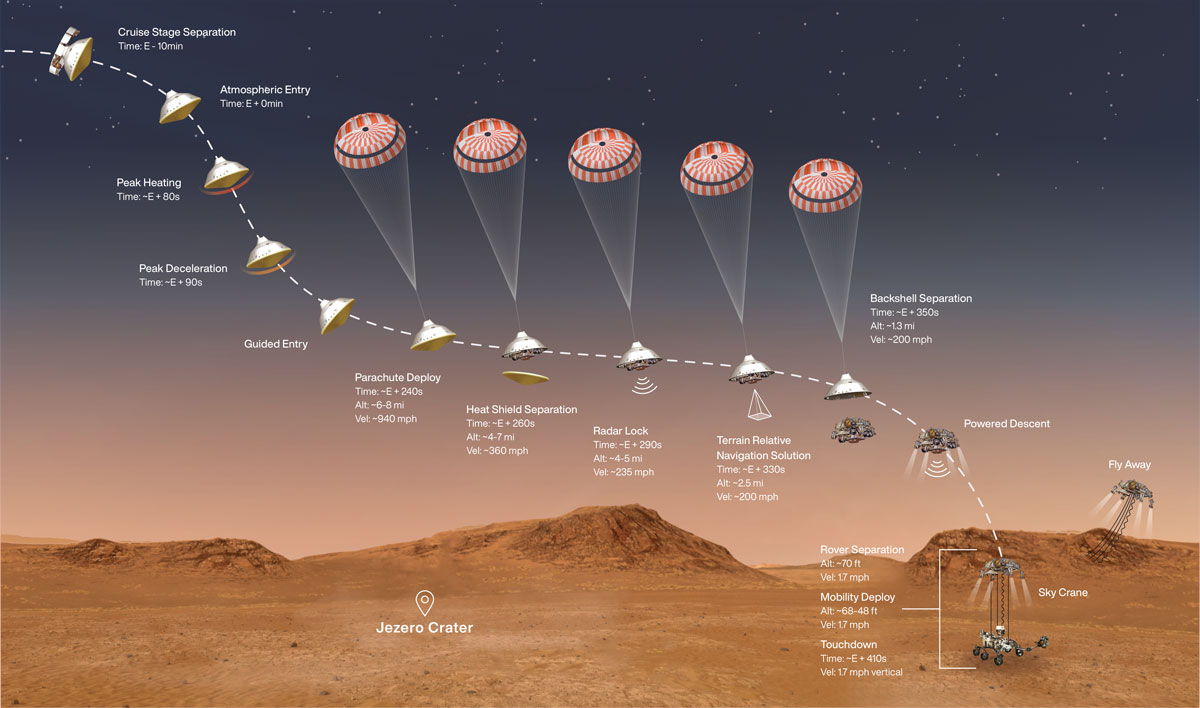![[Credit: NASA/JPL-Caltech] Perseverance](/images/Blog-Images/Perserverance/09_Touchdown_10k.jpg)
![[Credit: NASA/JPL-Caltech] Perseverance](/images/Blog-Images/Perserverance/09_Touchdown_10k.jpg)
Perseverance, Hope, and Questions to Heaven18/02/2021
Perseverance, Hope, and Questions to Heaven
By Eleanor Macdonald, Astronomer
In 2020 the planets aligned, quite literally, and 3 missions launched with the same destination in mind- Mars. About half of all Mars missions have failed, but with Hope and Tianwen-1 already in orbit and working well, 2021 could well be shaping up to be a year of historic success. No pressure Perseverance.
The United Arab Emirates’ Hope probe was the first of this batch of missions to reach the red planet. After 7 months and having travelled 494 million kilometres it entered Mars orbit on Tuesday evening. A few days later, Hope sent back its first picture of Mars:

[Caption: The image captured daylight breaking on Olympus Mons, the largest volcano in the solar system. Credit: UAESA]
The Hope probe will spend the next 2 years orbiting Mars and collecting data to provide the first complete picture of the Martian atmosphere. The team at the Emirates Mars Mission want to understand climate dynamics on Mars, and also to answer key questions about the rate at which Mars loses hydrogen and oxygen gases to space.
The day after Hope, Tianwen-1 also established orbit around Mars. Tianwen roughly translates to “Questions to Heaven”. It is the first successful interplanetary mission by the China National Space Administration (CNSA) and consists of an orbiter, deployable camera, lander, and rover. Tainwen-1 will spend the next few months orbiting Mars before attempting to land the rover. In that time, it will be scanning the surface of Mars to refine the target landing zone for the rover in Utopia Planitia. Should the CNSA be successful in landing their rover they would be only the second space agency to do so, after NASA. The objectives for the mission include studying surface soil characteristics, the distribution of water ice, and Mars’s magnetic field.
Finally, on the 18th of February the third mission that was launched during the 2020 launch window will reach Mars. The Perseverance rover is the centrepiece of the $2.5 billion Mars 2020 mission from NASA. It is about the same size as a small car and weighs in at just over 1000kg. The design of the Perseverance rover, affectionately nicknamed “Percy”, is based on that of the Curiosity rover but there are plenty of new additions.

[Caption: A diagram of the Perseverance rover which labels its scientific instruments. Credit: NASA/JPL-Caltech]
Perhaps the most exciting new feature being sent to Mars with Perseverance is the Ingenuity helicopter. The entire purpose of Ingenuity is to be a technology demonstration. It will reach Mars attached to the belly of Perseverance and after a few months it will be placed on the Martian surface and attempt- for the first time- powered flight on another planet.

[Caption: An artist’s impression of the Ingenuity helicopter and the Perseverance rover. Credit: NASA/JPL-Caltech]
Mars’s atmosphere is thin, only 1% as thick as Earth’s, and this makes generating the lift necessary for flight difficult. In order to make it possible Ingenuity has been made as light as possible at only 1.8kg. If the technology can be successfully demonstrated it will pave the way for future helicopter missions to Mars. The hope is that helicopters could be useful on Mars by allowing us a birds-eye view of geological features and to set sight on regions traditionally off-limit to rovers due to steep or slippery terrain.

[Caption: The Jezero crater and planned landing site for the Perseverance rover. To the left of the landing site you can see a water inlet and an ancient river delta. Credit: NASA/JPL-Caltech]
Perseverance will be aiming to land in the Jezero crater. This site has been selected due to the likelihood that it used to contain water. In images it appears to have both in inlet and outlet as well as an ancient river delta. River deltas are landforms created by the deposition of sediment from rivers as they run into slow-moving or stagnant water sources, such as lakes. The hope is that the river deltas on Mars will, like Earth, contain a large amount of organic matter. This is important because Percy’s raison d’être is to finally answer the question we’ve been asking for years: Is there life on Mars?
Well, almost. Perseverance doesn’t aim to investigate if there is currently life on Mars, rather it is looking to find evidence of past life. This is something that has been investigated to some extent by most surface Mars missions, but Perseverance has the best chance yet of getting us a definitive answer.
Previous rovers have searched for signs of life by pulverising rock into a fine dust and heating it to essentially see if it smells of dead stuff. Perseverance won’t be crushing rock; it will be drilling into it in order to obtain a core sample which will then be packed safely away. The goal is to collect around 0.5kg of rock which will, for the first time ever, be sent back to Earth.
Once the rock samples are back on Earth, scientists will finally have the opportunity to examine it with a full suite of laboratory instruments. The rock which will be collected will be selected based on the probability it holds evidence of ancient life. The rock collection mechanism will also provide an opportunity to test our ability to get things off Mars and could be vitally important for developing strategies for possible future crewed missions. We will have to be patient, however, as NASA has no plans to collect these samples soon, it will be 10 years at least.
Furthermore, Perseverance has MOXIE. The Mars Oxygen In-Situ Resource Utilisation Experiment, that is. This is a technology demonstration that will produce oxygen from atmospheric carbon dioxide. Mars’s atmosphere is 96% carbon dioxide so, if successful, MOXIE will open a number of new possibilities for mission planners trying to figure out how to support humans on Mars.
At approximately 8:55pm GMT Perseverance will land. Its Entry, Descent, and Landing (EDL) profile is identical to Curiosity’s, with one difference – Terrain-Relative Navigation (TRN). TRN is a new EDL technology which uses a special camera to quickly map the terrain. This is compared with an onboard map and if Perseverance determines that it is heading into hazardous terrain, it corrects course.

[Caption: The Entry, Descent, and Landing profile for the Perseverance rover. Credit: NASA/JPL-Caltech]
It is likely to be a tense couple of minutes, the team have already taken to calling it the “Seven Minutes of Terror”, and you too can participate in it! The entry, descent, and landing of Perseverance will be broadcast live by NASA on YouTube, Twitter, Facebook, Twitch, amongst other channels starting at 7:15pm GMT. More information can be found on the NASA website.
















